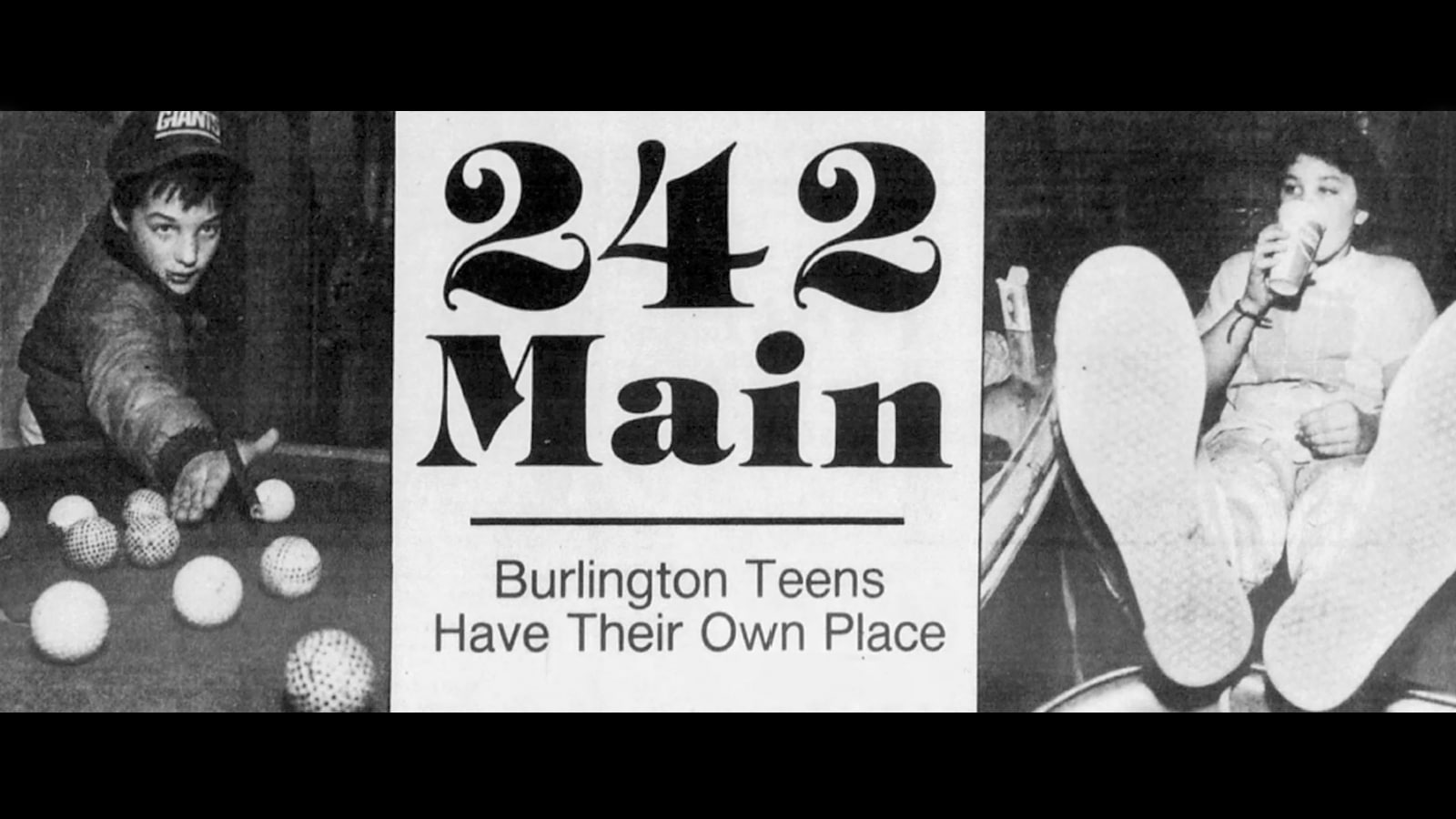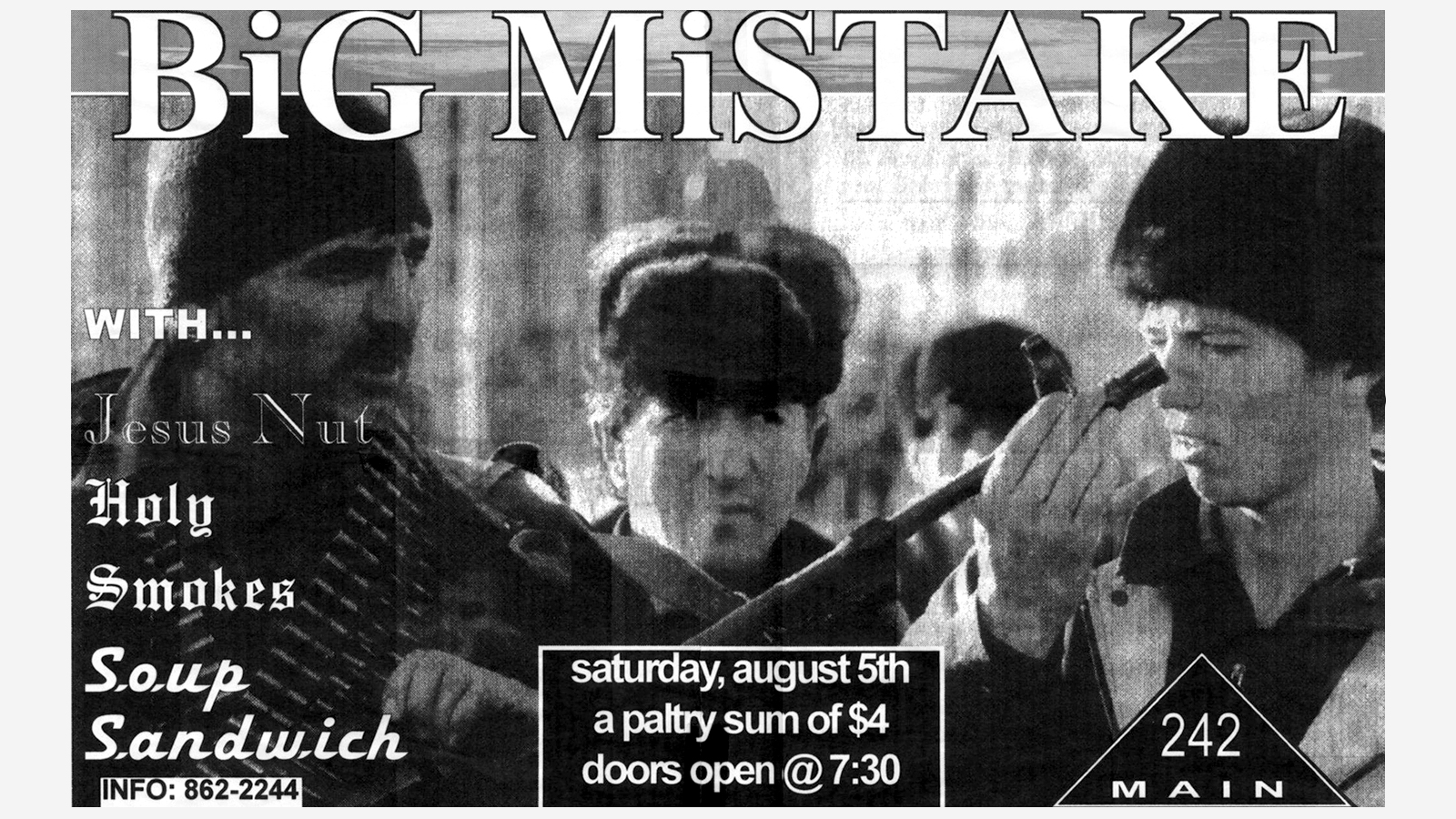The Burlington Youth Arts Center at 242 Main Street opened on Saturday, March 22, 1986.
When Mayor Sanders formed the Mayor’s Youth Office, he listened to the requests from local teens who said they wanted a place to call their own: somewhere they could see, learn and perform music.
“The leader of that effort, and the person perhaps most responsible for the founding of 242 Main, was Jane O’Meara Sanders, the director of the Mayor’s Youth Office.”[1]
O’Meara Sanders initially tested the waters with a few live shows at local venues. As with all live music and sports endeavors launched by Mayor Sanders’ office, it was an instant success. However, there was still a local ordinance prohibiting live music on public property at the time.
“We did a battle of the bands the first year, and we got approval to do it that one time, and it was fantastic,” O’Meara Sanders said. “We had hundreds and hundreds of kids coming out for six bands, and it’s still going on to this day.”[1]
When the auditorium they were using proved unsatisfactory for the long-term program goals, O’Meara Sanders found a location near the University of Vermont: a building that originally housed the City Water Department.
“It didn’t seem big enough for the city to use otherwise,” (O’Meara) Sanders says now. She approached the board of aldermen — a precursor to the current city council — on behalf of the Mayor’s Youth Office, starting the process of gaining city approval to retrofit and repurpose the space. With a $60,000 Community Development Block Grant in hand, (she) began the work of building 242 Main as a city-run teen center in 1985.”[2]
“We relied on a lot of support within the community,” (O’Meara) Sanders says. She credits Vermont architect David Sellers and designer Ed Owre in particular with helping to shape the physical space — with significant input from local kids themselves. Some teens actually helped construct the club as part of a building class.”[2]
“It was extraordinary how they rebuilt this dark, dank space into a fantastic place,” (O’Meara) Sanders says. 242 Main had a full stage that could double as a seating area when it wasn’t being used for music. Rock shows happened on most weekend nights.[2]
“When asked why Burlington decided to start the youth center, in the face of what was considered common sense governing at the time, O’Meara Sanders was matter-of-fact. “It was something that the community of young people said that they wanted, needed, and were willing to take care of,” she said. “They didn’t ask us to give them anything—they asked us to provide the opportunity. Everyone was very well aware that they had to police it and make sure that there were no problems. For us, it was a belief that if kids feel that they’re respected and needed and that they’re a component of a greater good, then that’s fantastic.”[1] O’Meara Sanders said the longtime success of the center was due to the leadership of Kathy Lawrence, who founded the center with her and managed it for years. “The success of 242 Main was built on Kathy’s unique ability to listen, to truly hear, and to collaborate with teens to creat a rare synergy there. She consistently nurtured their interests and empowered them to realize their own visions.”
The space served many purposes. There were daily after-school activities for the middle school kids, staffed by the high school students, and a weekly lecture series on civic responsibility with guest speakers from the community. There was a rehearsal space for plays, a publishing house for a biweekly kids news magazine “The Queen City Special” and a local-access TV show called “242 Presents” filmed onsite. Teens staffed the lunch counter and for a brief time an acoustic-music brunch on Sunday mornings. “And most afternoons, the smell of fresh-baked cookies and hazelnut coffee filled the space between walls adorned with artwork and colorful murals.”[2]
In addition to being a fun, inspiring, and safe haven for kids and teens to hang out after school, it also served for thirty-two years as one of the longest-running all-ages music venues in the country; and a legendary spot in the east coast punk rock scene, hosting acts like Fugazi, Operation Ivy, Agnostic Front, Judge, Seven Seconds, and the Misfits.
“242 Main started out as an all-encompassing youth center, but by the end of Sanders’s tenure as mayor in 1989, it had become renowned for its punk scene—a transformation that is all the more remarkable given that local police forces and large rock clubs in other cities at the time were doing anything they could to stop punk from happening. Not to mention that, in the Reagan era, with the federal government rapidly pulling funding from local governments, paying for a teen center with city dollars was no small feat.”[1]
O’Meara Sanders says the heart and soul of 242 Main in the 1980s and early ’90s wasn’t burgers or art projects. It wasn’t even punk rock. It was that the space belonged to the kids who used it, and they — not parents or politicians — could make of it anything they wished.[2]
 Back to Timeline
Back to Timeline














